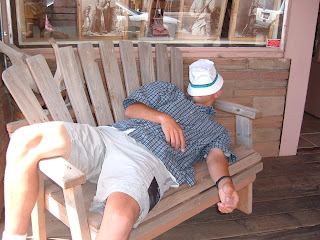In the broadest terms, grant writing is like fiction writing because the grant writer describes a future state that results from delivery of grant services. The details of how the grant will unfold are fictional, based on the best facts at hand, sound planning and demonstrated competence of the organization. In this post, I compare the key parts of a fiction story to key features of a grant narrative.
|
Fiction Writing
|
Grant Writing
|
|
The Main Character
The main character is the one who has to solve the conflict of the story.
A main character has a history that gives depth and makes the characters present actions logical. The main character needs to experience some form change that causes them to grow. It is not necessary to describe as much history about the supporting characters as the main character. A supporting character may support the resolution of the conflict while others may be the cause of the problem. |
The Applicant
The applicant is the main character and must be described. The writer must detail the history, strengths, accomplishments, plans, etc.
The conflict in a grant narrative is the need that has caused the submission of the grant in the first place. The grant is designed to resolve the needs(conflict) presented.
The supporting characters in a grant application are the partners, major donors, etc. The amount of description to include for each partner depends on their involvement in the grant design.
Another type of supporting character in a grant application is the recipients of services who may also grow, change or benefit from the services that the grant provides. It could be people, the environment, or an organization that benefits from the grant services.
A grant typically produces changes and/or growth in the application organization that relates to its history and mission in a logical way.
|
|
Character Building
A fictional character must be defined for the reader. A character must be described thoroughly so it produces a clear picture in the reader’s mind. Many times in fiction a more unique each character makes the story a lot more interesting. |
Building the Program Design
Character development is similar to development of the project design in grant writing. The project design needs to be defined, shaped, and described so clearly that the grant reader can “see” the end product with absolute clarity and conviction. Uniqueness can be helpful in grant writing too, but only if it builds the funder’s commitment to giving you the grant. If the uniqueness of your project just makes it unbelievable, you’re in trouble.
|
|
Dialogue
|
Grants do not have dialogue. This is a key point of departure between the two writing genres.
|
|
Detail
Details greatly enhance fiction but using too much detail can ruin a story by bogging down the flow of the action. |
Detail
While too much detail may ruin a fictional story, detail can only help a grant narrative; in fact, getting enough detail into a grant narrative is the most difficult challenge a grant writer faces. Detail is crucial to the credibility of your narrative.
|
Related Posts:
Photo Credit –
Julia Freeman-Woolpert










